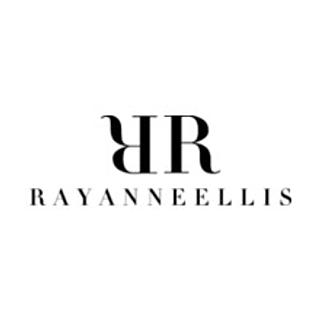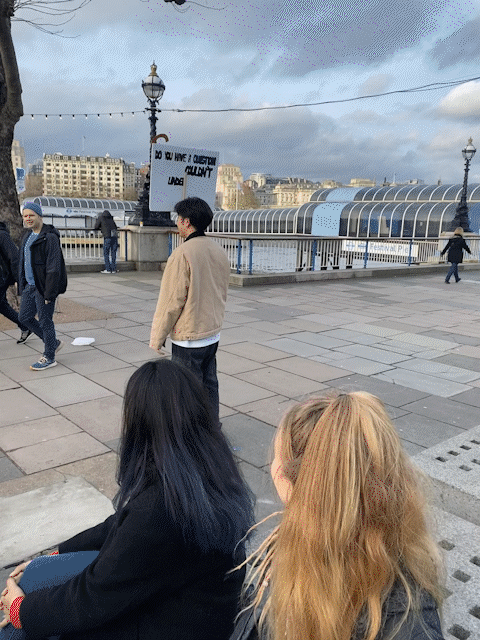Human Search Engine
- Rayanne Ellis
- Mar 14, 2024
- 5 min read
Updated: Apr 11, 2024
Unit: Collaborative
Team members: Ivy, Srushti, Way, Aniket, Shreeya, Rayanne and Melissa
Brief: Design a people based system for finding things out
Week 1: Monday 15 January - Sunday 21 January
Workshop one: Epistemology
I gained a practical understanding of epistemology and the ways knowledge can be systematically shared with others through the activity of cleaning (Bow Wow, 2014). I identified a method for cleaning the windows and displayed this for others to review, try, analyse and amend. My display could have been improved by including drawbacks of my method, before and after images and a comparison with the rest of the groups work.

Workshop two: Sampling for Designers
Designers role is to create meaning rather than unearthing truths (Schaathun, 2022) as a result design research lends itself better to non probability sampling because designers are not seeking knowledge on the whole population but deeper knowledge on the sample they are designing for (Uprichard, 2013).
In groups we tested Snowballing and Purposive non-probability sampling. I learnt in research there can be a tension between choosing a sample method in theory and actually achieving your sample in practice. We discussed as a group how to be more successful at obtaining your chosen sample:

Brief analysis & Directed Storytelling
Through group exploration of the brief we established our first research question: "What information do people seek from other people rather than the internet?" We agreed to use directed storytelling to understand the situations where people seek information from others, including the what, why, when, where and how. This method also fitted our timeframe more than similar methods like observational studies (Martin, Hanington, 2019).
Fig. 3 Brief Analysis, Fig. 4 Directed storytelling approach
We interviewed 2 / 3 participants each using convenient sampling to get a range of perspectives quickly. However, on reflection if we facilitated the interviews as pairs this could have reduced bias in the transcripts. Following the interviews we wrote our insights on a mind-map and group these into themes. This was more efficient than everyone going through each transcripts.
One of our themes cultural/ Local knowledge was also demonstrated by Matterns (2021) who argues cities encompass myriad forms of local and indigenous intelligence and knowledge institutions. Which we found were not always reflected in digital search results. We could have done more secondary research on all our themes to cross validate them.
Fig. 5 creating key themes Fig. 6 Key themes Fig. 7 One of my directed Storytelling transcripts
Ideation and role play
From our themes we had a range of ideas and were struggling to pick one. I suggested exploring the ideas through role play to identify what works well, what doesn't and how to evolve (Martin, Hanington, 2019). from the use of role-play we agreed an idea and created the experience journey.
Fig. 8 Ways court room idea, Fig. 9 Melissa's card's and Fig. 10 Shreeya's info card deck idea Fig. 11. experience journey from role play research. Fig. 12 Answer panel cards.
Testing
We tested our prototyped experience with a three university students/staff and our tutors to see if people responded well and how to improve the experience:

We improved our experience by converting our answer panel cards into flags and creating a sign explaining our experience. We facilitated round two of testing in the LCC information centre
Fig. 14 Turning criteria cards into flags following round 1 testing Fig. 15 Our tools for testing our human search engine within the information centre Fig. 16 - 18 Participants involved in round two experience testing in LCC Information Centre
Fig. 19 Insights from testing system within LCC information centre Fig. 20 We discussed as a group and with tutors how to improve the experience and came up with the above list
Week 2: Monday 22 January - Sunday 28 January
Onboarding and off boarding
We improved the onboarding by creating a visual aid and the off-boarding by creating answer receipts and feedback forms and ran a third round of testing.
The experience was more professional with Way introducing participants to the experience and guiding them through it. People also enjoyed receiving the answer receipts, however, the onboarding visual aid was not enough to give clarity to the stages of the experience which we needed to improve.
Fig. 21 My original visual aid, testing showed this was too detailed for participants and some steps were unnecessary. Fig. 22 Aniket created a new visual aid, however, participants were still confused on what they needed to do and what was next.
Fig. 23 - 26 Participants involved in round three experience testing in LCC Information Centre
Fig. 27 feedback form created by Ivy and Way and answer receipts filled in for participants. Fig. 28 Flags with definitions added to help participants joining answer panel
Visual enhancements
I researcher into installations and exhibitions for inspiration on how to implement visual aids into our experience and came across The Joy of sets X The Kubrick Archive (2016). I suggested we used this exhibition for inspiration to improve our experience:
Fig. 29 - 36 panels designed to aid users in the experience
Truth and performance
Our tutors highlighted our systems inability to give factual answers in contrast to google. They invited us to consider how we could use fiction to consider what is objective truth.
We reviewed our experience through this lens, changing the criteria flags to more playful statements than academic. We also tested providing fictional answers however, we realised this needs to be done well as there is a human connection when people are authentically having a conversation which is lost conversing inauthentically (Balboa, 2019).
Nevertheless, this approach did work well with ‘unrealistic’ questions e.g. what do animals on Mars look like. So we decided to give the questioner the option to hear fictional answers or genuine.
Fig. 37 - 40 new flags, new set up, participants involved in round 4 of experience testing.
Takeaway version
We considered where our experience lived in the world, from this Aniket, Way and Shreeya worked on creating a takeaway version of our experience that could be used as an icebreaker activity at work or parties. I'd like to test to plan an event to test this out at.
Fig. 41 - 45 Final takeaway version of our experience
Southbank centre
We facilitated a final round of testing at the Southbank Centre due to the footfall from a diverse range of people. The testing at the LCC information centre enabled us to seamlessly move between roles and onboard / off board participants effectively. We heightened the experience by adding elevator music. This led to people dancing on the spot whilst we “processed their results” or coming over due to the music intriguing them.
Fig. 46 - 51 set up at Southbank Centre and Participants involved in round 5 of experience testing at the Southbank Centre

Fig. 52 Questions participants asked during Southbank centre experience testing
Srushti, Melissa and Shreeya also set up an instagram handle and added it to our answer receipts for participants to get in touch.

Finally we presented our experience and findings on Friday
Fig 54 - 60 Images of our presentation included our takeaway version, initial cards, participants feedback and answer receipts.
Fig. 61 video of experience during presentation
References
Balboa, N. and Glaser, R. (2019) 'The neuroscience of conversations', Psychology Today , 16 May. Available at: https://www.psychologytoday.com/gb/blog/conversational-intelligence/201905/the-neuroscience-of-conversations (Accessed: 14 March 2024).
Bow-Wow, A. (2009) Echo of Space / Space of Echo. Japan: LIXIL Publishing.
Martin, B. And Hanington, B. (2019) Universal Methods of Design. Beverly: Rockport Publishers.
Mattern, S. (2021) City Is Not a Computer, A: Other Urban Intelligences: 2. Princeton: Princeton University Press.
Schaathun, H. (2022) Where Schön and Simon agree: The rationality of design,
Design Studies, 79(101090), Available at: https://doi.org/10.1016/j.destud.2022.101090.
The Joy of sets X The Kubrick Archive (2016) [UAL], London College of Communication, London. 19 - 22 September 2016
Uprichard, M. (2013) Sampling: bridging probability and non-probability designs, International Journal of Social Research Methodology, 16(1), pp. 1-11. Available at: 10.1080/13645579.2011.633391


















































































































